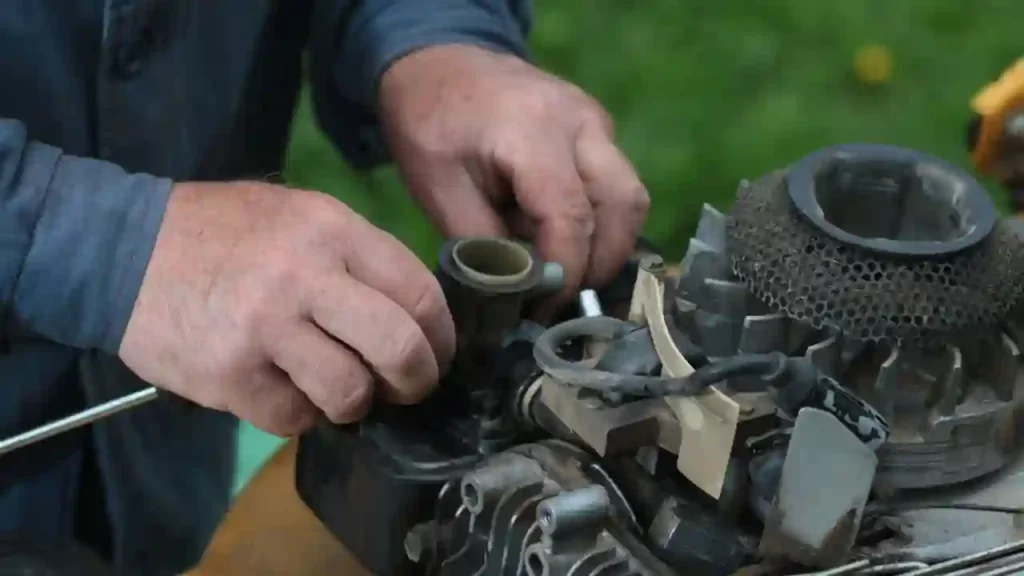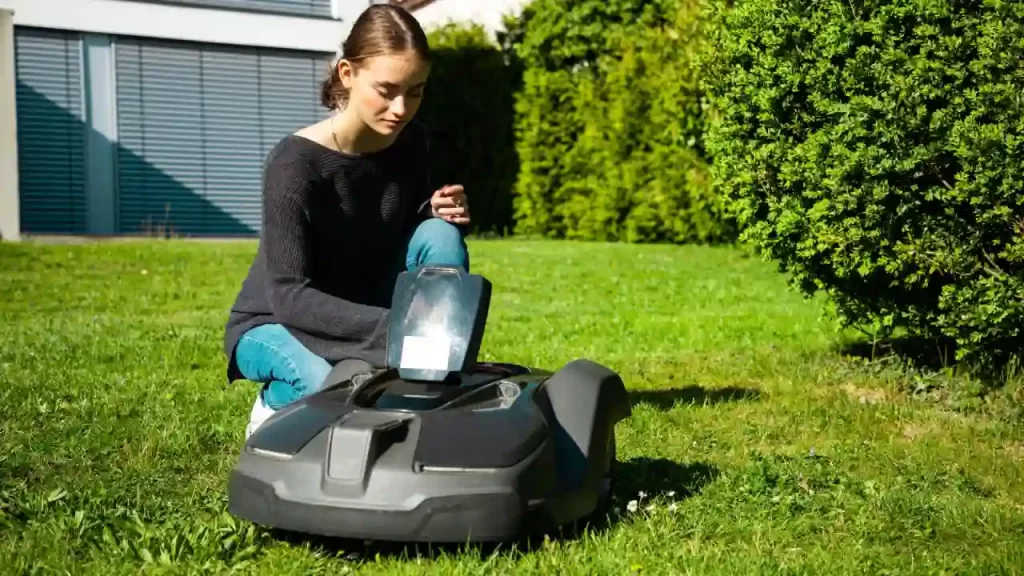Do you remember a time in the suburbs, on Saturday mornings, when the sound of multiple gas lawnmower engines would fill the air? As technology has moved on, this sound is becoming less common, and now with the introduction of robotic lawnmowers, it could soon become a distant memory.
It is important to regularly clean your robotic lawnmower and ensure that no debris or grass cuttings compromise its performance. To clean the machine, you need to switch it off, turn it over, and carefully clean out all the grass cuttings and other debris from the wheels and chassis.
Like any other mechanical device with moving parts, robotic lawnmowers need to be looked after and kept clean to ensure they operate optimally. Problem areas to look out for are rotting grass cuttings getting caught in the drive system, that there is no impact damage, the blades are still sharp, and the battery is in good order.
The Best Method To Clean A Robotic Mower

The ease with which a robotic mower keeps the lawn at a perfect height is good and bad.
It works by itself and requires minimal supervision and care, which unfortunately means that it is often not cared for.
The Robotic Mower spends long spells (sometimes months and years) being exposed to the elements to maintain the lawn at the right height.
While a robotic mower needs less maintenance than a walk behind lawnmower, it needs some care, particularly cleaning. If the robotic mower is not washed according to a regular schedule, it will soon start with dirt and grass cuttings building up in the nooks and crannies of the robotic mower.
Like a conventional lawnmower, the grass cuttings build up around the wheels, and if it isn’t removed, it starts to rot, which could blunt the cutting blades or affect the drive mechanisms.
Grass juices are corrosive, and the moisture in them can also cause the cutting blades to rust.
How To Clean The Robotic Lawnmower?

If the mower is grimy and dirty with blunt blades, it will have to work harder, leading to wear on the mechanics of the drive system, which will reduce its mobility and compromise its ability to cut.
Follow the steps below when cleaning the robotic lawnmower.
- Make sure you turn the automatic lawnmower off at the main switch.
- It is always good to wear protective gloves when working with mechanical equipment.
- Turn the Robotic Mower over so that the underside is displayed.
- If you want to give the mower a deep clean, removing the blades is a good idea.
- While the blades are removed, check the condition and ensure the cutting surfaces are still sharp.
- If not, use the opportunity to replace them.
- Carefully remove all waste clipping from around the blades and in the corners.
- Use a toothbrush to clean the dirt from the nooks and crannies.
- If you haven’t removed the cutting blades, be very careful that you don’t cut your hands while you clean in and around them.
- Use a dishwashing brush to remove clippings from the rest of the underside, including the skid plate, wheels, and chassis.
- When it is fully clean, replace the blades, ensuring they are correctly attached.
- Turn the Robotic Mower right side up and wipe away any loose clipping and other debris.
- Use a cloth and a solution of water and dishwashing liquid (or other cleaning agents) to clean the chassis, body, and panel.
- It is very important as it cleans out any damp clippings which could eventually cause corrosion.
- Importantly, never use running water to clean a battery-powered robotic lawnmower. While some manufacturers do permit a few of their products to be cleaned with running water, it is recommended that a damp cloth and cleaning solution will suffice.
- It may seem a little excessive; however, protecting the robotic lawnmower with high-quality car polish will help shield it from the harshest UV rays.
How To Clean The Robotic Lawnmower Charging Station?
If the robotic lawnmower has a charging station, this should also be kept clean.
To ensure it continues to operate optimally, follow the steps below.
- Switch the electrical current to the charging station.
- Even if you have switched the power to the charging station off, it is good practice also to unplug the connection.
- Clean the waste grass and other debris which has settled onto the unit, such as leaves, twigs, or other objects that may prevent the robotic lawnmower from docking into the station.
- Once again, clean the charging station surfaces using a damp cloth and a cleaning solution (dishwasher liquid and water work fine).
- Check the condition of the charging plate and contact and if necessary, use very fine grain sandpaper to remove any pitted or corroded surfaces.
- Once again, while it may seem like overkill, if you polish the surfaces with a good quality car wax, it will help protect the charging station from the ravages of the sun.
Regular Checks And Maintenance

While it is essential to clean a robotic mower regularly, it is equally important to check that it is operating optimally.
While you will be able to check the condition of the blades when you clean the lawnmower, it is important that you also keep an eye on how the battery is performing.
Most robotic lawnmowers use lithium-ion batteries, the same technology as those found in cell phones and tablets.
There are many good reasons why manufacturers use this battery technology.
- They need less maintenance than other battery types.
- They can be discharged to a lower value than other battery technology.
- They are significantly more durable and lost at least twice as long as other batteries.
The negative aspect is that they are the most expensive battery technologies.
While Lithium-ion batteries do last longer, they will still eventually degrade to the point where they need replacing.
If the battery is not charging to 100% (as shown on its display screen), it is starting to degrade.
Another sign that the battery is not working optimally is that the robotic lawnmower spends less time mowing than it did when new.
Of course, this result is that it spends more time in the charging station.
Depending on the make of the battery, if it is no older than two years, you should approach the supplier with a warranty claim.
If it is older than the warrantied period, you will have to purchase a replacement with your resources.
Conclusion
While robotic lawnmowers require less care, attention, and maintenance than conventional machines, they need to be cared for. If you clean the device weekly, monitor the condition of the batteries, and keep the cutting blades, it will perform better and keep the grass looking smart.
References
https://www.husqvarna.com/za/robotic-lawn-mowers/https://www.youtube.com/watch?v=3IQhM0dkiiE
Recent Posts
Are you ready to plant tomatoes for the best tomato harvest of your life? It all starts with getting the fertilizer right! Fertilizing tomatoes can seem daunting, but when done correctly, it’s...
9 Reasons Why Your Tomato Plants Wilting and How To Fix This!
When the gardeners see their lovely and precious tomato plants wilted, they become hopeless, sad, and impatient. But the situation can often be reversed with proper care and adopting a few good...
